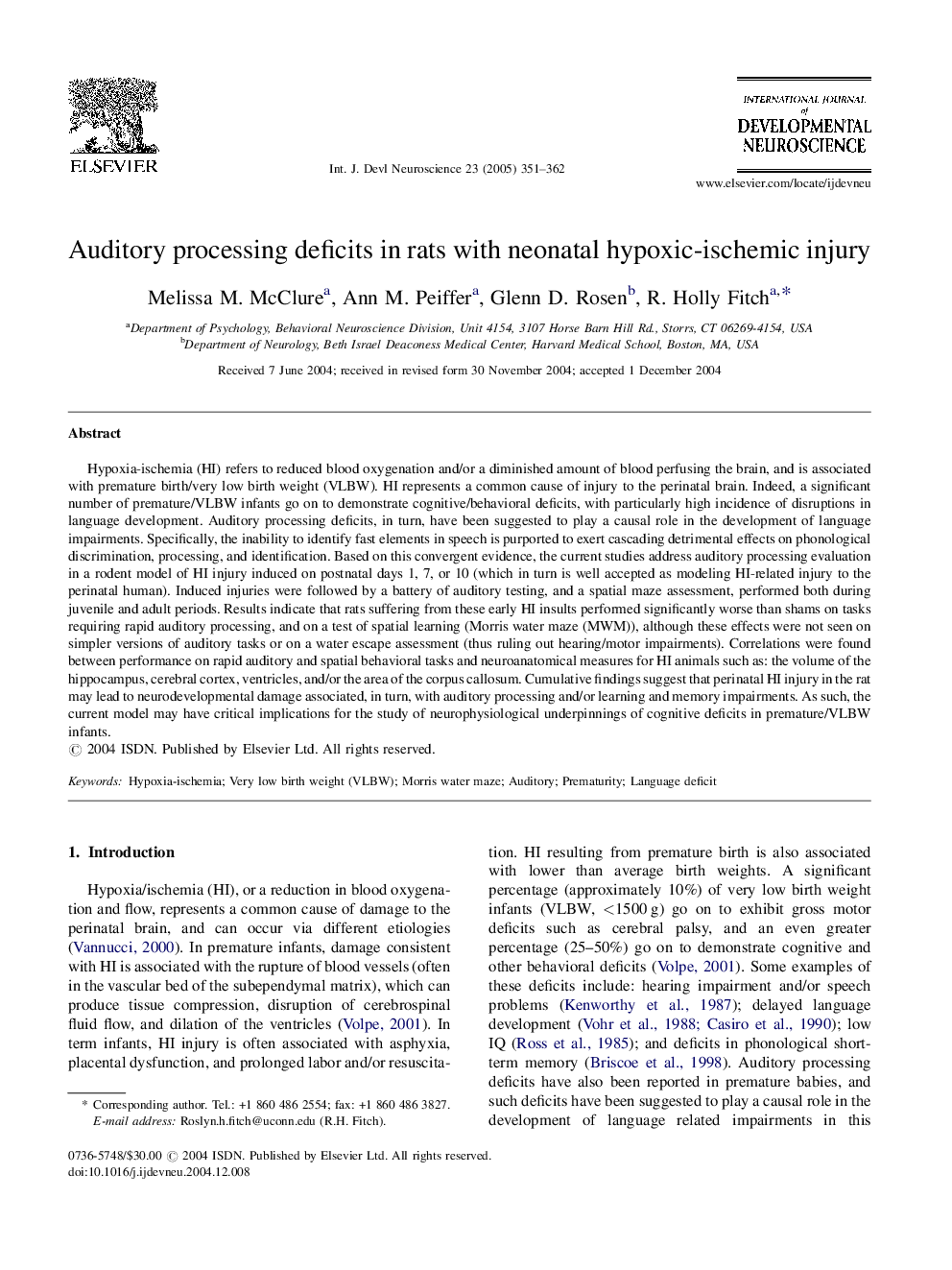| Article ID | Journal | Published Year | Pages | File Type |
|---|---|---|---|---|
| 9933586 | International Journal of Developmental Neuroscience | 2005 | 12 Pages |
Abstract
Hypoxia-ischemia (HI) refers to reduced blood oxygenation and/or a diminished amount of blood perfusing the brain, and is associated with premature birth/very low birth weight (VLBW). HI represents a common cause of injury to the perinatal brain. Indeed, a significant number of premature/VLBW infants go on to demonstrate cognitive/behavioral deficits, with particularly high incidence of disruptions in language development. Auditory processing deficits, in turn, have been suggested to play a causal role in the development of language impairments. Specifically, the inability to identify fast elements in speech is purported to exert cascading detrimental effects on phonological discrimination, processing, and identification. Based on this convergent evidence, the current studies address auditory processing evaluation in a rodent model of HI injury induced on postnatal days 1, 7, or 10 (which in turn is well accepted as modeling HI-related injury to the perinatal human). Induced injuries were followed by a battery of auditory testing, and a spatial maze assessment, performed both during juvenile and adult periods. Results indicate that rats suffering from these early HI insults performed significantly worse than shams on tasks requiring rapid auditory processing, and on a test of spatial learning (Morris water maze (MWM)), although these effects were not seen on simpler versions of auditory tasks or on a water escape assessment (thus ruling out hearing/motor impairments). Correlations were found between performance on rapid auditory and spatial behavioral tasks and neuroanatomical measures for HI animals such as: the volume of the hippocampus, cerebral cortex, ventricles, and/or the area of the corpus callosum. Cumulative findings suggest that perinatal HI injury in the rat may lead to neurodevelopmental damage associated, in turn, with auditory processing and/or learning and memory impairments. As such, the current model may have critical implications for the study of neurophysiological underpinnings of cognitive deficits in premature/VLBW infants.
Keywords
Related Topics
Life Sciences
Biochemistry, Genetics and Molecular Biology
Developmental Biology
Authors
Melissa M. McClure, Ann M. Peiffer, Glenn D. Rosen, R. Holly Fitch,
